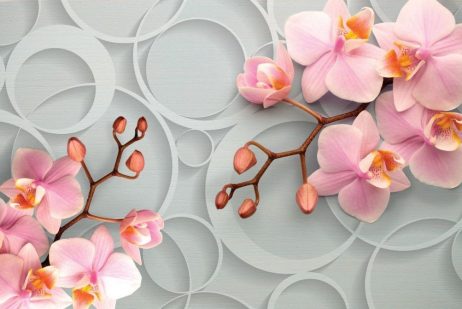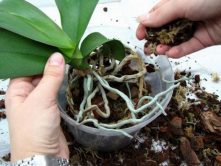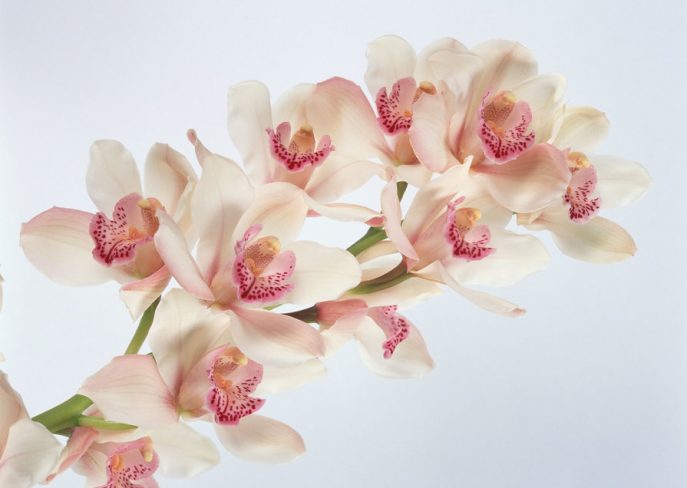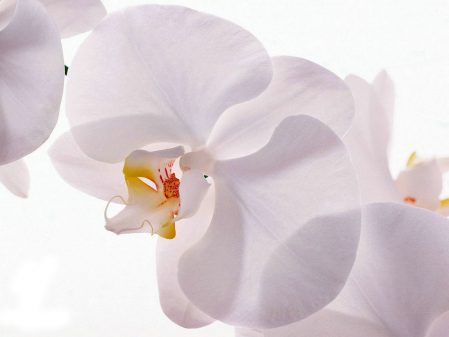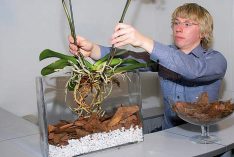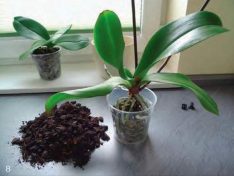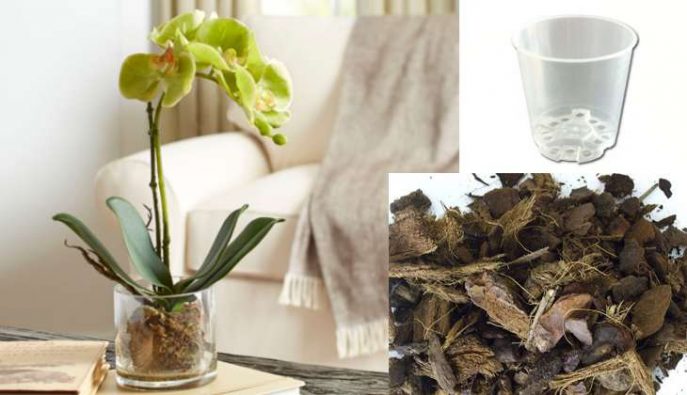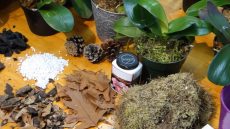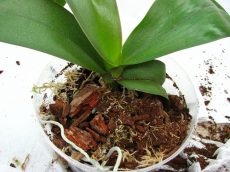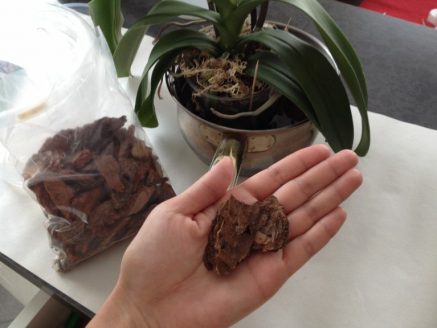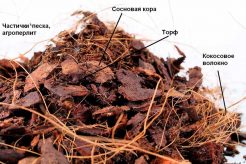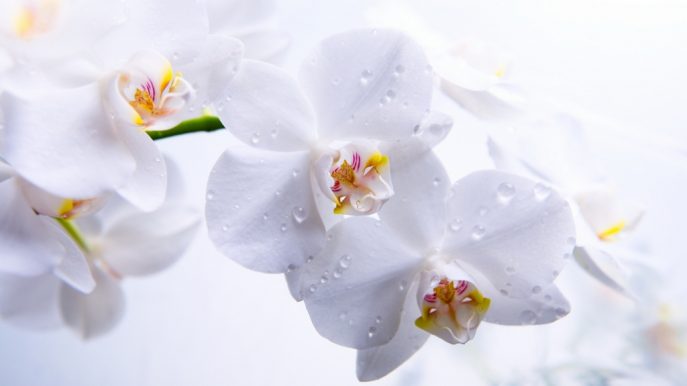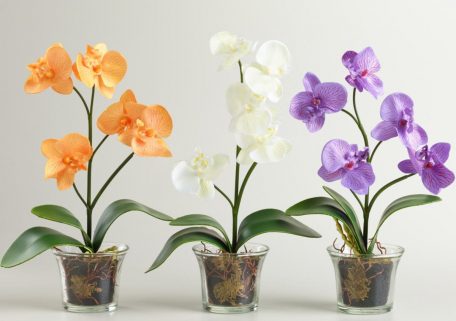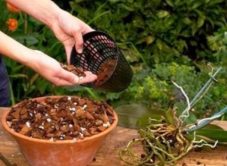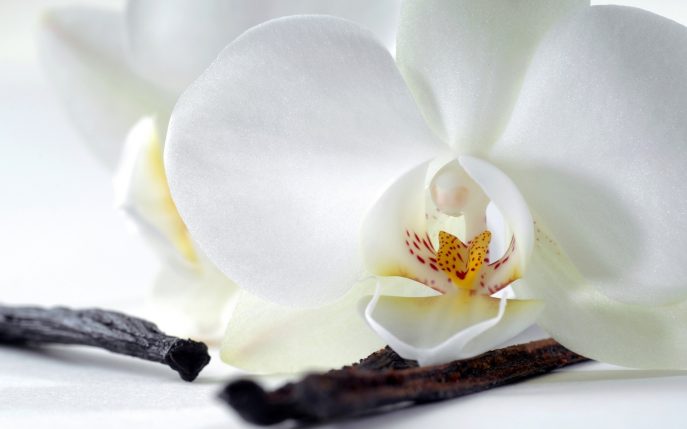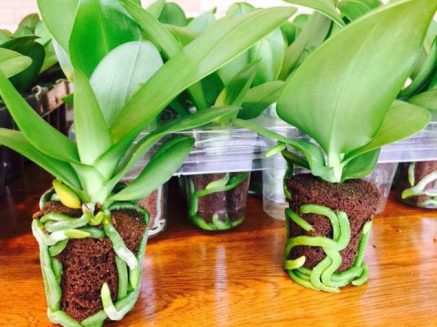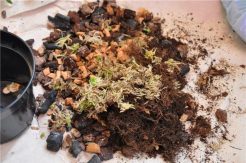A lot has been said about the beauty of orchids, which has led to increased demand for these plants. But not everyone has an idea about which substrate to choose for the flower and what conditions need to be created for long-term flowering. The substrate is the breeding ground of your pets, so mistakes in its selection or manufacture can lead to the death of the plant.
Material Content:
- 1 Substrate - what is it?
- 2 How to choose a primer for orchids?
- 3 Orchid Growing Substrate Components
- 4 Soil composition options
- 5 How to make a substrate for your own orchids - recipes
- 6 When is a plant transplant needed?
- 7 Stages of transplantation and the nuances of laying soil in a flower container
- 8 Is it possible to plant an orchid in the ground?
Substrate - what is it?
There is no shortage of substrates now, just look at the flower shops, but what is it like? What is the difference between the proposed options and how to choose the right one? Is it possible to independently prepare a breeding ground for your pets? These and many other questions were asked by everyone who decided to plant blooming orchid gardens at home.
To answer all the questions, you need to decide on the main thing: what is the substrate for orchids? The word "substrate" comes from the Latin word substratum, and in literal translation means the base, litter. As a rule, its composition depends on several factors - the habitat of plants and varieties of orchids acquired. But in any case, it must meet several requirements:
- provide air to the root system;
- supply the plant with water, accumulating the right amount of moisture, avoiding excessive wetting and decay;
- decompose slowly in a humid environment;
- do not emit harmful substances.
The main component for the substrate is pine bark, crushed and pre-treated from parasites.And the further composition will already depend on what kind of plant your plant belongs to and where it will be contained, in a humid or dry environment.
How to choose a primer for orchids?
There are several types of orchids that successfully grow at home. But in order for the plant to please with long flowering, it is necessary to take care of favorable conditions for its maintenance, as close as possible to the environment of their growth.
If your room does not differ in high humidity, then for the flower you need to choose a moisture-resistant soil. In addition to the tree bark, it must also contain other components, horse peat, sphagnum moss and charcoal. The content of the last component should not be more than 5% of the total volume, otherwise it may turn into a salt accumulator, which negatively affects the growth of the plant.
Charcoal can be replaced with several leaves of apple trees, which can prevent the appearance of mold and fungal diseases.
If the flower is contained in a room with sufficient humidity, then the requirements for the selection of substrate are lower, and are mainly focused on the variety of orchids and breathability. To understand in what proportions the components of the mixture should be for your pets, you need to disassemble each of them individually.
Orchid Growing Substrate Components
To create favorable conditions, two components are enough, the tree bark and sphagnum moss. Depending on their proportion, a more or less moisture resistant substrate can be obtained. For more comfortable living conditions, gardeners and amateurs use other components, peat, foam balls, expanded clay and others. We will talk about the properties of each material.
Bark
Tree bark is the main component of both finished substrates and home-made. It can be bought or assembled in the forest with your own hands. Pine bark is preferable, but if one cannot be found, other types of trees are used, such as: oak, beech, spruce and others.
Tree bark collection requirements
- Procurement of material should be made from dry, sawn trees. In this case, it has less acidity and contains a few resinous substances. Plus, it is easily separated from the main trunk.
- Pieces must be chosen strong, without signs of decay or damage by pests. Neglecting these requirements, the substrate will quickly become unusable, as it experiences constant exposure to moisture and stress from growing roots.
- After the main collection of the material, it must be carefully reviewed and cleaned of softened tissues and tar residues.
- Carry out heat treatment from parasites.
- Dry the resulting material carefully.
How to use bark
- Since coniferous bark has an increased acidity, to neutralize it, dolomite flour is added to the mixture.
- Before planting, it is recommended to soak the bark in water, thereby creating favorable conditions for its further growth.
- The size of the wood fractions should be selected so that there is no strong compaction of the substrate, due to which air penetrates poorly and moisture is retained for a long time, causing rotting of the root system.
Moss sphagnum
Sphagnum swamp moss gained its fame in floriculture due to such abilities:
- retains moisture without compaction of the soil;
- makes the substrate for orchids loose, thereby enriching the roots with oxygen;
- takes away from the water an excess of salts harmful to orchids;
- has a bactericidal effect.
Sphagnum moss is indispensable for resuscitation of orchids affected by drying or decay. It can be bought at flower shops or prepared independently.
Sphagnum moss collection requirements
- Material collection is best done in late fall.
- The collected moss should be washed thoroughly and sorted out from the garbage.
- Carry out heat treatment by soaking it in boiling water and dry well.
You can use live moss, but there is a chance of settling in the pot unwanted insects or microorganisms.
Other components
Other materials are used to grow orchids, consider some of them.
Expanded clay - is an indispensable component for all gardeners. The material is well structured and prized for its high hygroscopicity.
Charcoal - has similar qualities with expanded clay, which also has absorbent and bactericidal properties. Coal fragments no smaller than 2 cm are used to grow orchids. When using smaller fractions, they are quickly destroyed, thereby compacting the soil and interfering with the nutrition of plant roots.
Polyfoam and foam - These are non-traditional components, but they are great for growing crops. They are appreciated by such properties:
- durability;
- good air permeability due to the provision of loose soil;
- do not exude harmful substances.
Horse peat - one of the common components of the substrate for growing orchids. Its advantages include:
- moisture retention without soil compaction;
- high oxygen permeability;
- lack of pests.
But there is a drawback - this is increased acidity.
The durability and quality of the substrate depends on the size of the fractions of its components and their durability.
Soil composition options
There are different options for substrates for growing orchids:
| Features of orchids | Soil Components | The moisture content of the substrate |
|---|---|---|
| Epiphytes that do not need high humidity, but require good ventilation of the roots. | Pine bark, the size of the fractions is not less than 2 cm. The bark of larch, oak or birch is also suitable. | The substrate has a low moisture capacity. |
| Epiphytes requiring high humidity. | Pine bark with the addition of any moisture-consuming enzyme. The size of the fractions of the material in the range of 2 cm | The moisture content of the soil depends on the proportion of the constituent components. |
| Epiphytes with good aeration requirements. | A mixture of pine or other bark, moss, charcoal, peat, and foam balls. The larger the fraction of the components, the higher the degree of aeration. | The moisture content of the resulting mixture also depends on the proportion of its components. |
| Orchids open content. | A mixture of bark, moss, peat, fern roots, charcoal and polystyrene particles. | Adjusting the moisture capacity of the mixture depends not only on the proportion of the components, but also on the size of its components. The larger they are, the less moisture resistant the soil will be. |
| Orchids for housing conditions and not requiring frequent watering. | A mixture of bark, moss, peat, fern roots, charcoal and foam particles. The size of the fragments should be from 1 to 2 cm. | Medium moisture resistant substrate. |
| Ground varieties of orchids. | A mixture of pine or other bark, charcoal, peat, sphagnum moss, foam balls and organic fertilizers. The fraction size is from 0.5 - 0.8 cm. | Moisture resistant and nutritious soil. |
How to make a substrate for your own orchids - recipes
The soil recipe for an orchid depends on its varieties. Consider the most common of them.
Cattleya and Phalaenopsis
- cork made of wood - 3 parts;
- bark of a pine or other tree - 3 parts;
- peat or sphagnum - 1 part;
- lime - 2g per 1 liter of mixture;
- expanded clay - 1 part;
- liquid fertilizers - 1: 2 with water.
This substrate has good aeration and low moisture capacity.
Paphiopedilum (Paphiopedilum) and cymbidium.
- bark - 5 parts;
- high peat - 2 parts;
- charcoal - 1 part;
- expanded clay - 1 part;
- lime - 2 g per 1 liter of the mixture.
The size of all components should be approximately the same.
You can also add to this option 1 share of humus. The result is a mineralized, medium moisture-intensive and well-ventilated mixture.
When is a plant transplant needed?
Orchids are very sensitive plants and recover for a long time after transplantation, so you should not disturb them for no reason, only for emergency purposes.
It is believed that the shelf life of the substrate is approximately 2-3 years, and if you are new to orchid cultivation, you need to focus on this period. In the future, it will be possible to determine the suitability of the substrate by the appearance of the material.
When an orchid needs to be transplanted
- If the plant grows in a pot for more than 3 years.
- When coloring soil components and sedimentation of residues at the bottom of the container.
- When there is an unpleasant odor, reminiscent of the smell of mold or compost.
- In the event that the pot after draining water has a lot of weight. The old substrate is very strongly absorbed by water, which is not always beneficial for the growth of orchids.
- If damaged or rotten roots are visible.
Stages of transplantation and the nuances of laying soil in a flower container
Transplanting orchids is not an easy process and has its own nuances:
- The plant from the pot must be removed without the use of effort. If it does not work out, it is better to cut the container.
- You need to dress pieces of bark after a little soaking, for this the plant is placed briefly in warm water.
- When removing damaged parts of plants, sections must be sprinkled with charcoal.
- Water that has got into the sinuses and leaf sockets must be removed using paper towels.
- Soil preparation begins with laying a drainage layer, in the role of which expanded clay acts. After a layer of prepared substrate is poured from 3 to 5 cm.
- The roots are laid out on the resulting pillow and gradually covered with the remaining substrate.
- For good survival of orchids, the roots should lie still for some time, for this the flower is fixed with wire.
- At the end of the pot is lowered briefly into the water, drained and sprinkled with a substrate.
Is it possible to plant an orchid in the ground?
Some varieties of orchids can still be grown in the ground, but in order not to spoil your plant, you need to know its appearance exactly. These are mainly tropical varieties, which breeders are now actively trying to breed and create hybrids for growing in apartment conditions.
Varieties such as Ascocenda, Wanda or Phalaenopsis grow only on wood substrates, since they need good aeration. The earth is too dense for them and does not conduct air well. Without drying out the roots and lack of oxygen, the orchid will rot and simply disappear.
Summing up, we can say that the substrate for orchids is their habitat, and not an additive, therefore, the choice of its components should be treated with great responsibility. But the success of good growth depends not only on the selected mixture, but also on the proper care of the flower as a whole.


